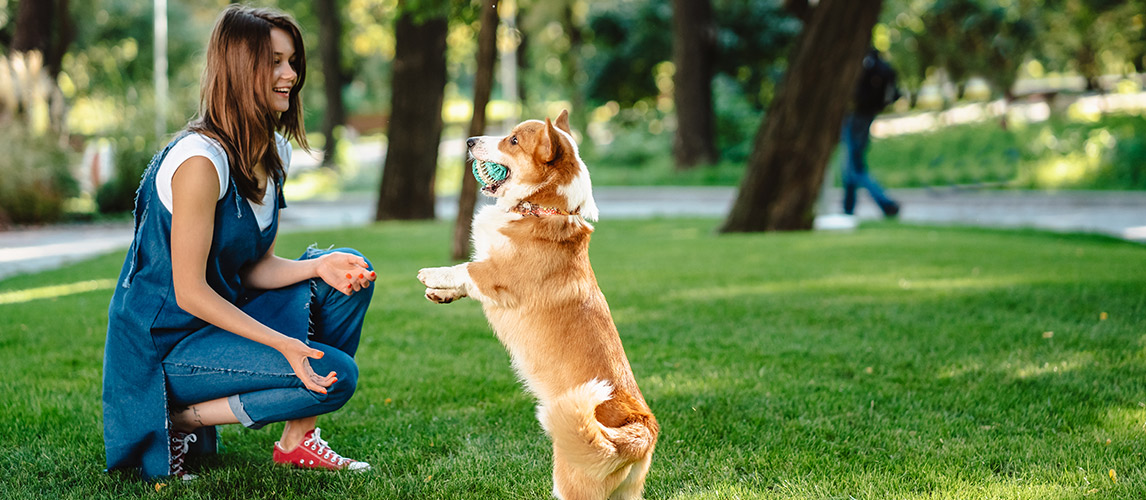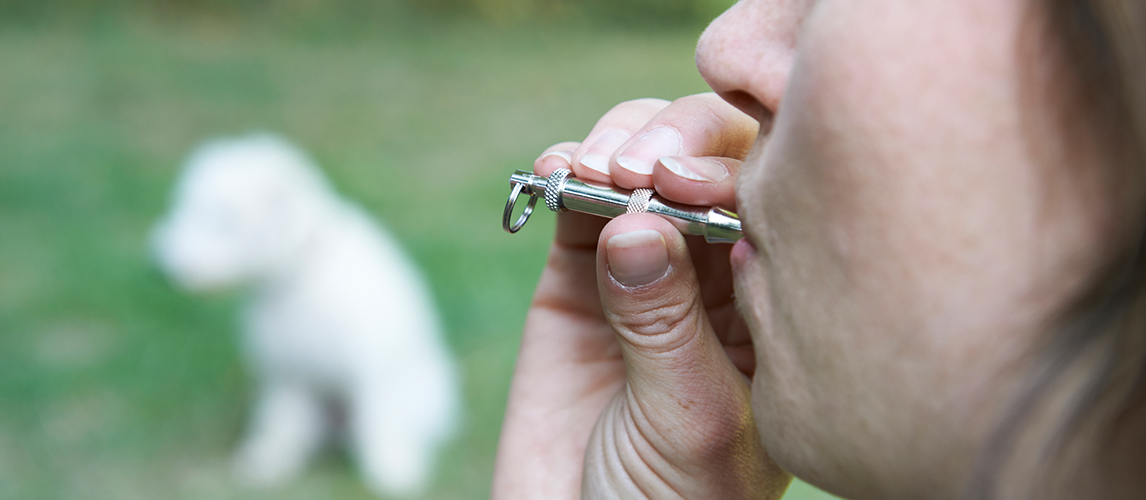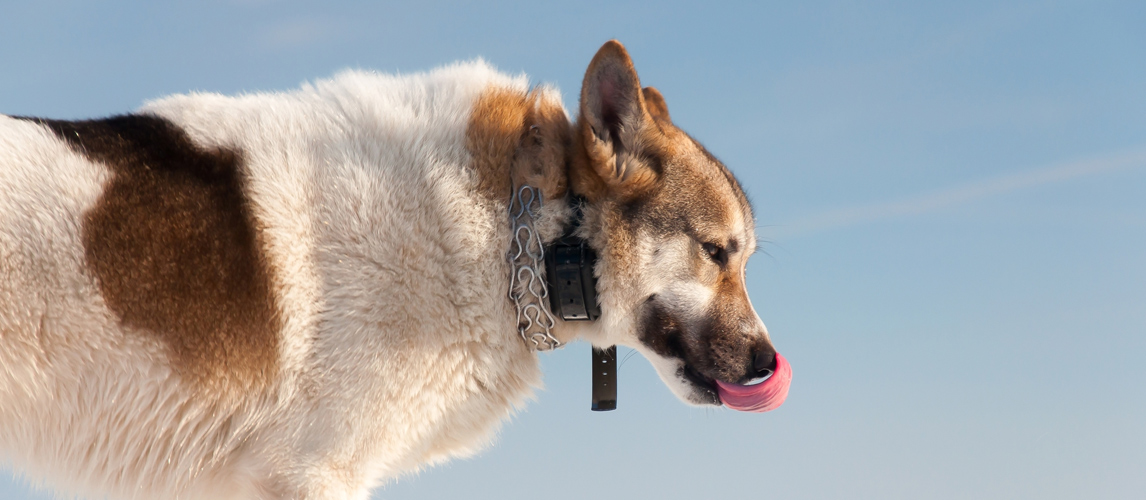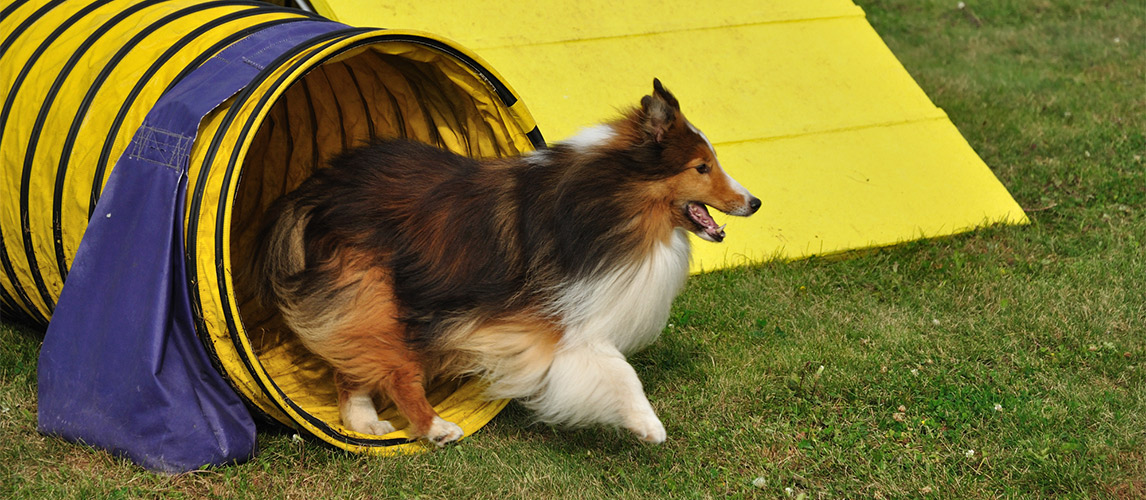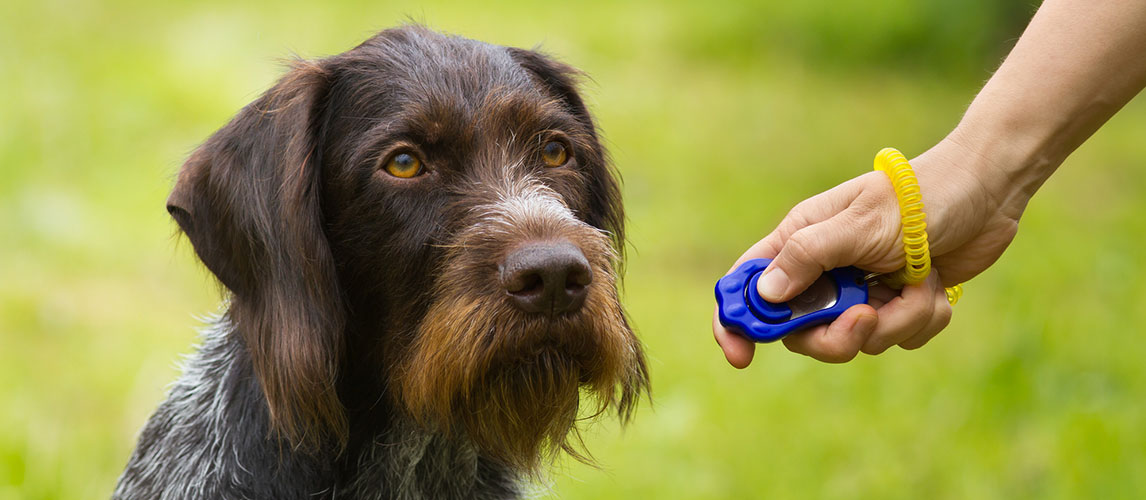When you think of a muscular dog, you immediately think of the more ripped breeds such as Pitbull or Rottweilers types. But all dogs need good muscle condition for their physical health as well as their energy and general wellbeing. So, if your dog is a little underwhelming when it comes to their muscle tone, then it is possible to improve their condition by introducing the right muscle-building routine.
In this blog, we explore the reasons why you may want to help your dog build muscle and show you the best way to bulk them up naturally in just four easy-to-follow steps.
Reasons to Build Up Your Dog’s Muscle
We all know how important exercise and playtime are for dogs. For some dogs – working dogs or sport dogs, for example – strength and stamina training is key. But even companion dogs who don’t have the same activity levels need to be in good physical shape to not only maintain their health but also enjoy a long, happy life.
Here are the four key reasons why you should work to ensure your dog has good muscle tone:
To Maintain Muscle Mass in a Senior Dog
As a dog ages, they will naturally lose some of their muscle mass. Sarcopenia is the name given to the loss of muscle that occurs with age, and this can be for several reasons, including lower activity levels, weaker or arthritic joints, and age-related inflammation in the body. Weaker muscles in older dogs, particularly in their hind legs, can also lead to balance issues and potential injury.
Keeping senior dogs active in their old age will not only support their muscle strength, slow down muscle loss, and keep them mobile but it can also positively impact your senior pooch’s mental and general physical health.
To Help Recovery After Surgery or Injury
Muscle weakness or loss – also known as muscle atrophy – can be a consequence of surgery, injury, or illness in dogs as they experience an extended period of rest and recuperation. Prolonged pain as well as transferring their body weight can also lead to localized muscle wastage.
As part of their rehabilitation, your attention should focus on re-building your pup’s muscle strength to ensure a faster recovery and regained mobility.
To Enhance Performance
Working dogs can benefit from a muscle strengthening program to improve or maximize their performance out in the field or in the arena. Strong muscle condition not only improves a dog’s performance and energy, but also boosts their flexibility, balance, and speed, while also helping to reduce the chance of injury.
Muscle strengthening can also benefit your pet if they are a high-energy or particularly active dog.
To Support Their General Health
All dogs can benefit from some form of strength training in their daily exercise routine for building lean muscle. Canines with strong muscles are less likely to suffer an injury and can more easily maintain a healthy weight.
With healthy muscles, their overall health will also benefit, and they will have more energy and stamina to enjoy the things they love to do.
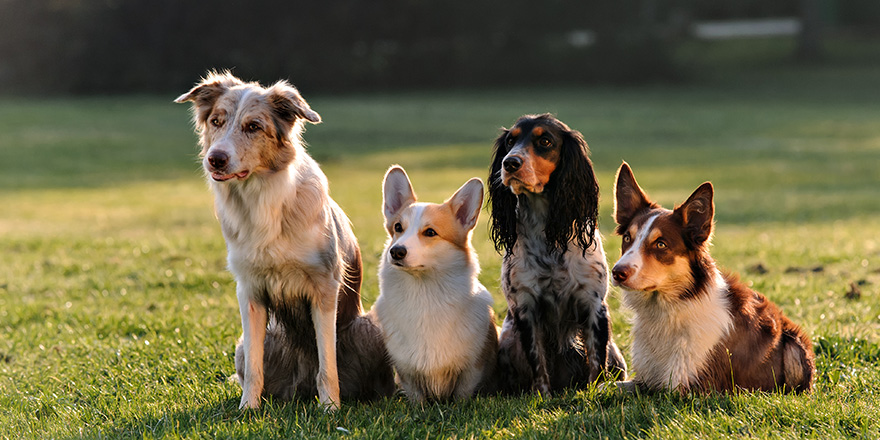
When You Shouldn’t Try to Build Muscles
One exemption to any muscle-building strategy is puppies or young dogs under the age of two. As puppies grow at different rates, they need the time to naturally and healthily develop into adult dogs so only need exercise to support their growth. In fact, unless advised by your veterinarian, any muscle-building program for puppies is discouraged as it can negatively impact their early years’ development.
Excessive strength and muscle-building exercises can also lead to potential permanent damage to their still-developing bones and joints.
Your Four-Step Plan to Building Muscle in Your Dog
Whatever the main reason you have for building your dog’s muscles, taking the time to plan their new routine will give you and your pooch the best results for their health and wellbeing.
To get you started, here is our four-step plan to safely and naturally building muscle in your dog:
Step 1: Assess Their Muscle Condition
Before embarking on a muscle-building schedule, it is a good idea to assess your dog’s current muscle condition so you are starting with the right body awareness. If you are in anyway unsure or concerned, consulting your veterinarian is a good place to start as they will be able to rule out any medical issues that may be causing muscle wasting and give you targeted advice.
Alternatively, if you know your pet is in good health, you can check their body condition yourself so you can ascertain whether his muscle condition is poor and whether he is over or underweight. A dog that is overweight will need a different exercise and diet regime to a dog that is under their optimum weight for their breed and size.
And remember, some dog breeds such as Dobermans, Rottweilers, Greyhounds, and the Bully types will have more of a natural athletic shape that makes them easier to bulk up.
Step 2: A Healthy Diet
A proper diet with the right nutrition is essential for healthy muscles, so you need to feed your pet high-quality dog food that supports their energy levels and muscle mass. The ideal healthy dog’s diet for building muscle should include all the essential carbs, amino acids, good fats, vitamins, and minerals. And it should be protein-rich with high-quality animal meat that is the ideal muscle food. Protein is needed not only to feed their muscles but also to support their energy levels.
It is also important to ensure the protein in their dog food is not bulked out with fillers as your pooch needs to stock up on essential amino acids that form the building blocks for lean muscle mass.
If your dog is underweight, look for dog food for weight gain that will also support the development of lean, healthy muscle. You should also read our guide to how to put weight on a dog if you are unsure how to adapt their diet. Weight gain supplements can also be a good idea if your pooch is particularly underweight.
When embarking on a muscle-building program for your pet, it is a good idea to start adjusting a more high protein diet around six weeks before you introduce an increased exercise regime. And when you do start their exercise program, make sure your pet has access to plenty of fresh, clean water to ensure they stay sufficiently hydrated.
Step 3: Exercise
Daily exercise should be an important part of your dog’s life, whether that’s a walk around the block, a hike in the hills, or a blast in the local park. But to make their muscles work harder and build up more mass, you also need to add some targeted strength and resistance exercises to their routine.
Depending on the size, breed, and age of your pooch, he will need between 20 and 60 minutes of exercise at least once a day. You can use this time to add in extra muscle-building exercises or tailor their playtime to include strength, resistance, and aerobic activities.
Resistance training exercises such as using a tug toy, weight pulling or a weight vest used for weight training work particularly well in building up your dog’s muscles by causing tiny tears in the muscle fibers. This is not something to worry about as the body heals quickly, rebuilding the muscle tissue to be larger and so protect against future damage.
Other forms of exercise that build muscle in your dog include:
Swimming
A fantastic form of exercise that works for all the major muscle groups, swimming also puts less pressure on your dog’s joints so is a good strength exercise to build muscle in arthritic or senior dogs. Most dogs love water but do use a dog swimming vest for safety and make sure the swim area is not too challenging for your pet.
Treadmill or running
Yes, it is possible to buy a doggy treadmill! These are great pieces of all-weather exercise equipment for your pet, if they are calm and you start slow so they can get used to the way it works. And it means your pet can get the muscle-friendly cardiovascular exercise they need each day, even if it is raining outside!
Alternatively, work in bursts of running to their daily exercise which you can gradually increase to get your dog’s heart pumping, or join them for a power run so you both get the health benefits. You could also add a weighted vest, adjusted for light weights for more intense training and an extra muscle builder.
Spring poles
A knotted rope attached to a spring-loaded pole that works as an anchor, spring poles are a good way to play tug of war with your dog and ensure he gets the right amount of resistance as he gets to grip with his toy.
The strong resistance of tug of war with a spring pole is great fun for your pet and works to strengthen and build their muscles, particularly in their neck, back and hind legs as well as giving them a mental workout.
Don’t forget to prep
Before any form of exercise sessions to build muscle, you must make sure your dog warms up properly, with five to 10 minutes of walking, with senior dogs needing a little longer. And after their fun muscle-building session, always spend another 10 minutes walking to allow your dog’s body to sufficiently cool down.
You can also give your dog high protein treats can also be used as a reward for a muscle-building exercise session well done.
Step 4: Rest
Any new forms of exercise or training should be introduced gradually, especially if your dog is older, underweight, or out of physical condition. Make it fun, don’t over-exhaust them, and slowly build up the time or amount of exercise they do.
Sufficient rest days between each exercise session are also vital if you want to build your dog’s muscle condition as their muscles need enough time to recover. And, just like humans, your dog’s body will need a time out from his strength training in-between sessions.
This down dog time is where his muscles will destress and repair themselves after exercise, ultimately enabling you to achieve the goal of adding more muscle mass and strength as well as boosting your dog’s health.
Get the Right Balance
The key to maxing out on your dog’s muscle building is to get the balance between diet, exercise, and rest just right and always take it slowly. You want to maintain the challenge to their muscles and that means building up the type and duration of their exercise slowly, so your dog’s muscles don’t get fatigued out.
Go too hard too soon and you will more likely see muscle strains in your dog, even injury, rather than lean and healthy muscle mass. And this includes building muscle in sporting, working, or athletic dogs too.
It is also important to match your muscle training program to your dog’s breed and don’t try to change their natural shape or form. For example, whippets are meant to be lean and lithe so adding too much muscle mass can cause problems as they will be carrying excess and unnatural weight.
And always give your pup time to sufficiently cool down after their resistance and strength exercises and build in plenty of rest time to enable their body and muscles to repair.

The Final Word on Making Your Dog More Muscular
Whether your dog is fit and active, your average pooch, or on the more senior side, working on building and maintaining their natural muscle tone can improve their health, wellbeing, and longevity. But when it comes to dog muscle building, you should not be aiming for an unnaturally pumped canine but a lean, strong, and defined dog that is in tip-top condition and enjoying his best life.
Whatever your dog’s current fitness level, you need to gradually build up their dog muscle-building routine and also focus on their cardio, mobility, and strength to ensure the very best muscle growth.
Coupled with a high protein, well-balanced diet as well as plenty of time for rest you can naturally improve your pooch’s muscle mass as well as his overall health.
Sources:
- Dog Muscle Building Exercises, BullyMax
- Post-Workout Cool-down for your Dog, PetMD


